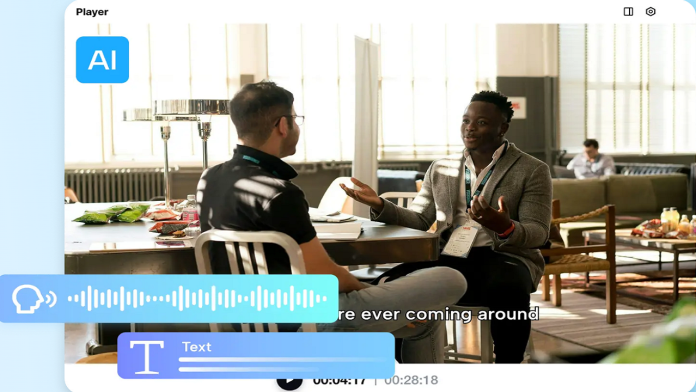Video-to-text conversion is a valuable tool for numerous people. Converting your videos to text through Pippit AI saves time and expands audience reach. Pippit AI offers users a straightforward solution to transcribe video to text.
Choose a Good Quality Video
The conversion process begins with selecting a video that has both high clarity and good quality. The quality of video, sound, and speaker clarity affects the number of mistakes in the generated text. Your selected video must have easy-to-hear speech, stable pacing, and minimal background noise. The accuracy of the text transcription of Pippit AI depends on the quality of the video that is uploaded.
Keep the Audio Clean
The audio quality should remain free from loud music, echo, and sudden background noises. Pippit AI performs better when accurately detecting words, as the audio track remains free from confusion.
Upload the Correct Video File
Verify your video file before beginning your work. Ensure that the video remains intact without any damage. The correct file upload prevents mistakes and additional work in the future. The video needs to be in a supported format, such as MP4 or MOV.
Use Short Clips for Best Results
Break long video content into smaller segments to optimize processing efficiency. Short videos are easier to process and simpler to review, allowing for correcting any small errors afterward.
Check the Transcription Carefully
Always thoroughly review the text after converting the video. The AI can sometimes make mistakes when processing fast speech and technical terminology.
Edit for Better Clarity
Review the text by correcting grammar errors, filling in missing words, and correcting names when necessary. The editing process will produce a final document that appears both clean and professional.
Add Captions to Videos
After obtaining the text, you can transform it into video captions. Captions enable viewers to understand videos even when sound is disabled, making your videos more accessible to people with hearing difficulties.
Style Your Captions
The Pippit AI interface allows users to adjust the caption font size and color, as well as determine their placement on the screen. Your main priority should be selecting a readable text style. The text should use distinct colors that contrast against the video background. Any text kept in white against dark background elements will show up clearly in video content.
Translate to Other Languages
Consider translating the text that Pippit AI transcribes to expand your audience’s reach. The Pippit AI enables users to convert their text into Spanish, French, German, and other languages.
Use Simple Language When Translating
The translation process works best with basic sentence structures. The artificial intelligence system performs better when it receives material written in simple terms.
Save in the Right Format
Once your text is ready, select the correct file format to save it. Pippit AI provides two file download options, including TXT and SRT formats. TXT files are appropriate for articles and blogs, while SRT files are suitable for adding subtitles to videos.
Organize Your Files
Create separate file folders on your computer system for each of your projects. Place the original video, its transcription, and final files in the same folder. Organizing your files will enable you to locate your work efficiently and effectively.
Make Quick Edits for Each Platform
The presentation requirements for each platform require minor textual adjustments. Blog content structure requires extended paragraphs, but Instagram demands brief and attention-grabbing text. Rephrase your text to match the desired posting area.
Improve Your SEO with Text
Your website or blog will achieve better search engine rankings by including video text. Google processes text content more efficiently than it does video content. Search engines make your transcription text more findable when you include relevant keywords.
Add Relevant Keywords
During transcription editing, you should naturally integrate essential keywords into your text. Do not overstuff them. Keyword normalization should appear throughout your sentences.
Practice Makes Perfect
Your transcription skills will improve automatically as you continue using Pippit AI. Regular practice requires uploading various video content, including interviews, tutorials, and testimonials. This lets you discover optimal strategies that enhance your work through sequential improvement.
Stay Updated
Verify Pippit AI’s updated features regularly for enhancements in the platform. The latest version offers users enhanced accuracy and diverse language options while introducing new editing capabilities. Regular updates to your account will optimize your productivity during work tasks.
Conclusion
Converting videos to text through Pippit AI is easy and simple, following a few strategic guidelines. Begin your videos with high-quality footage, then review the text several times to add eye-catching captions. Regular practice enables users to transform their videos into professional written content.











